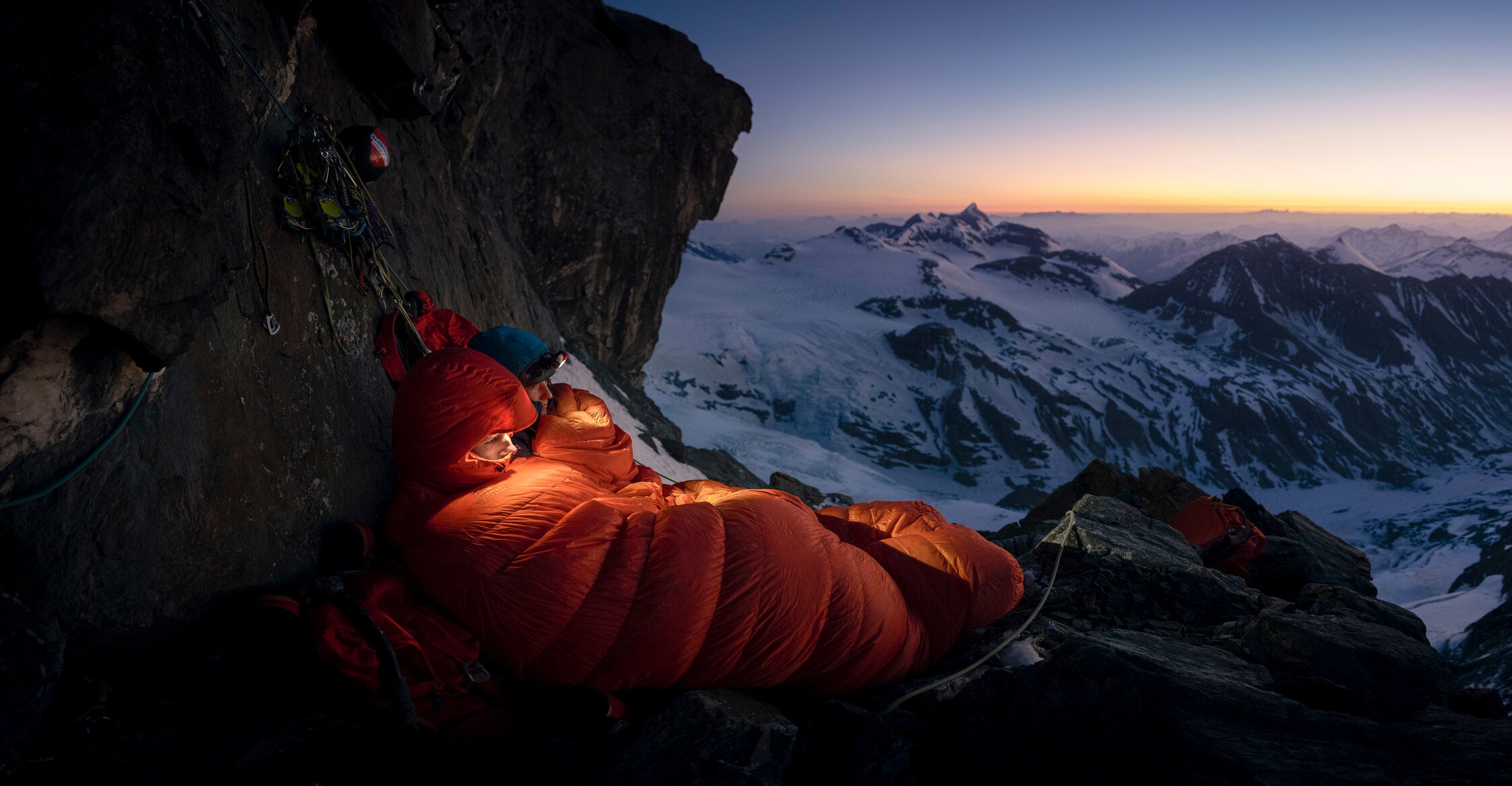Sleeping Bag Temperature Ratings Explained
- Kit Lists and Guides
- Product Development

"How warm is a sleeping bag" is the thing people consider most before making a purchase. While it's not the only consideration (cost, pack size, down or synthetic fill all should be considered too), how warm the bag is will likely be the difference between a good and bad experience in the mountains.
Temperature ratings for sleeping bags can be confusing. We will explain what the various ratings mean and how we try to simplify things with our “Good Night’s Sleep Temperature”.

History
Buying sleeping bags used to be straightforward, relying on recommendations from friends, shop staff, or magazines. Manufacturers needed an easy way to advertise warmth, leading to various testing methods, from lab and field tests to measuring bag thickness. Eventually, specific temperature ratings emerged as the 'most accurate' way to describe a sleeping bag's warmth.

A sleeping bag testing standard was then developed, this was influenced strongly by Mountain Equipment and our experience of testing bags. While not legally binding, the standard meant that if manufacturers released bags onto the market that had inaccurate temperature claims they could be reported to trading standards.
The current ISO 23537 sleeping bag test standard is recognised globally, with the standard itself undergoing regular reviews. Mountain Equipment have been a consistent partner of the UK’s ISO 23537 guiding committee since its inception and we remain one of only three partner members.
The current standard and its drawbacks- ISO 23537
ISO 23537, and its predecessor EN 13537, uses a heated manikin with multiple temperature sensors inside a climate-controlled room on a standardized mat. The manikin, wearing standard pyjamas and a cold weather mask, measures the power needed to maintain warmth in a cold room, determining the sleeping bag's thermal resistance. Before testing, sleeping bags are kept at a constant temperature and humidity and allowed to loft fully. The test runs until equilibrium is reached. The thermal resistance is converted into temperature ratings based on historical data. This standard produces three temperature ratings.
- Comfort temperature: This is where a "standard woman" with relaxed posture is just not feeling cold.
- Limit temperature: This is where a "standard man" with curled up posture is just not feeling cold. This is the number most retailers and brands refer to.
- Extreme temperature: This is where risk of health damage to a ‘standard woman’ by hypothermia occurs.
The standard has reduced discrepancies between manufacturers and is repeatable within a few degrees. Using a consistent heat source from the manikin, it avoids variables like diet or mindset that affect real people and measures the whole sleeping bag, unlike some lab tests. However, the standard isn't perfect. The manikin does not represent individual sleep patterns or real sleeping environments.

There are a few drawbacks of the ISO 23537 test, and three of them are explained below:
- Manikin shape: The manikin used in the test varies slightly by lab, affecting how tight spots on the sleeping bag compress insulation and make the bag seem colder. Since the test may not represent your size, it's important to try a sleeping bag for fit, like a jacket or climbing shoes. This is why there are various fit options, lengths, and women's versions in many models.
- Winter sleeping bags: The test excludes "extreme climate zone expedition" sleeping bags, officially for bags with a limit temperature colder than -24°C, though its accuracy diminishes below -15°C. For very cold conditions, it's better to rely on experienced friends, shop staff, trusted brands, and common sense: a bag with 1200g of down will likely be warmer than one with 800g, unless construction or quality differs significantly.
- The effect of face fabrics: In huts or sheltered tents, the face fabric of a sleeping bag doesn't impact warmth much due to minimal airflow. However, outdoors without shelter, airflow becomes crucial. The ISO 23537 test simulates a 1 kmph airflow which can negatively affect results for very air permeable fabrics, which might perform poorly despite their real-life advantages. These fabrics are breathable, comfortable, fast-drying and lightweight, making them ideal for multi-day trips. Many professionals prefer these fabrics despite poor test ratings because they excel in practical use.
ISO 23537 is the best rating system for sleeping bags despite some shortcomings. It helps identify bags that deviate significantly from their advertised ratings but doesn't precisely differentiate bags within a few degrees of each other.

“Good Night’s Sleep Temperature”
Here at Mountain Equipment, we have developed our own temperature rating to help you choose the best sleeping bag.
Our “Good Night’s Sleep Temperature” rating is a combination of scientific testing, countless field trials and exhaustive expedition testing. This temperature rating provides an indication as to the minimum temperature that we feel the bag should be comfortable to for an experienced user.
We think Our Good Night’s Sleep temperature rating is the most accurate measure of how warm a bag will keep you in real-life situations.
This rating forms part of our "Good Night’s Sleep Guarantee", allowing you to choose with confidence. If you feel the bag you purchase is too cold, we can upgrade your bag. For more information on our Good Night’s Sleep guarantee please visit mountain-equipment.co.uk/pages/a-good-nights-sleep-guaranteed
While we suggest you base your sleeping bag purchase most closely on our Good Night’s Sleep temperature rating, you should of course consider whether you particularly feel the cold. This individuality is very important and is not considered in our temperature ratings.
In the same way, a person who is ill, exhausted, hungry or sleeping in the open is much more likely to be cold than someone who’s fit, well-fed and sleeping in a sheltered spot. Our Good Night’s Sleep temperature should be used as a guide, but it’s ultimately up to you to decide how warm a bag you might need.






